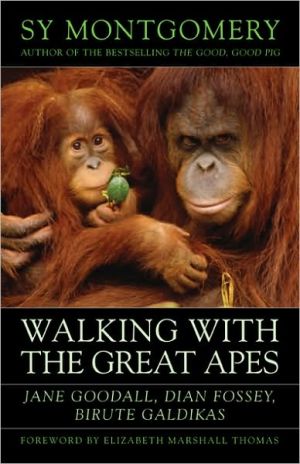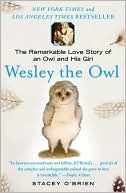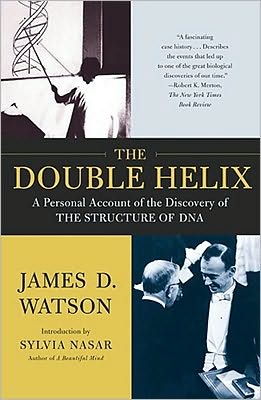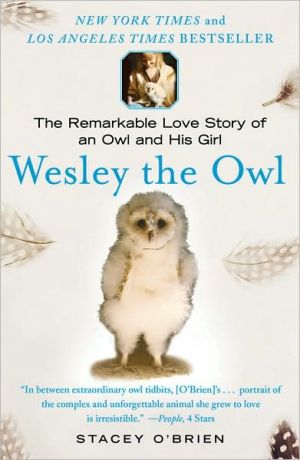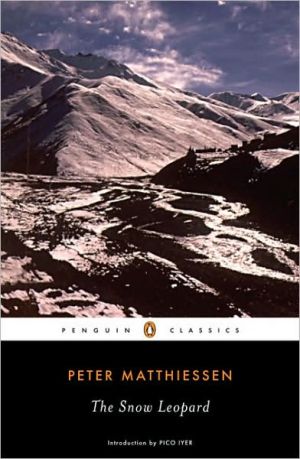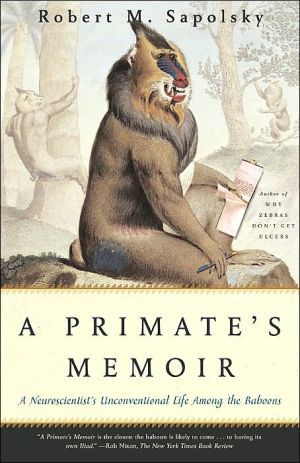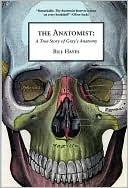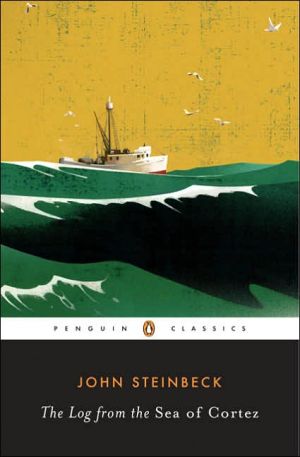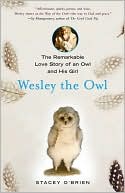Walking with the Great Apes: Jane Goodall, Dian Fossey, Biruté Galdikas
2017 is the 50th anniversary of The Dian Fossey Gorilla Fund and Karisoke Research Center in Rwanda. Three astounding women scientists have in recent years penetrated the jungles of Africa and Borneo to observe, nurture, and defend humanity's closest cousins. Jane Goodall has worked with the chimpanzees of Gombe for nearly 50 years; Diane Fossey died in 1985 defending the mountain gorillas of Rwanda; and Biruté Galdikas lives in intimate proximity to the orangutans of Borneo. All three began...
Search in google:
Three astounding women scientists have in recent years penetrated the jungles of Africa and Borneo to observe, nurture, and defend humanity's closest cousins. Jane Goodall has worked with the chimpanzees of Gombe for nearly 50 years; Diane Fossey died in 1985 defending the mountain gorillas of Rwanda; and Biruté Galdikas lives in intimate proximity to the orangutans of Borneo. All three began their work as protégées of the great Anglo-African archeologist Louis Leakey, and each spent years in the field, allowing the apes to become their familiars and ultimately waging battles to save them from extinction in the wild.Their combined accomplishments have been mind-blowing, as Goodall, Fossey, and Galdikas forever changed how we think of our closest evolutionary relatives, of ourselves, and of how to conduct good science. From the personal to the primate, Sy Montgomery explores the science, wisdom, and living experience of three of the greatest scientists of the twentieth century. Publishers Weekly In this study of three great female primatologists, science journalist Montgomery moves beyond biography into ethology, taking a step that goes well beyond even her subjects' research. Goodall, Fossey and Galdikas each made a similar leap, the author contends, moving from observers and recorders to an almost shamanistic quest to enter the world of the apes they studied. These personal transformations are sketchily supported with anecdotes from the field, personal interviews and even a jarring account of an attempt to contact Fossey, after her death, via channeling. Montgomery adds little to Farley Mowat's 1988 biography of Fossey, Woman in the Mists , but she offers a few fresh angles on Goodall, Galdikas and other characters, human and ape, met before in their books. In an epilogue, Montgomery offers the intriguing view of these scientists as pioneers of a particularly female way of scientific knowing that deserves fuller argument than three portraits allow. Photos. (Mar.)
Forward xiPreface xviiPart I Nurturers1 Biruté Galdikas and Supinah 12 Jane Goodall and Flo 173 Dian Fossey and Digit 36Part II Scientists4 The Prodigal Faith of Louis Leakey 575 "Science with a Capital S" 756 The Sacrifice of Nyiramachabelli 1117 A Study in Patience 142Part III Warriors8 Crusader: The Moral Dilemma of Jane Goodall 1679 Sorceress: The Madness of Dian Fossey 18410 Diplomat: The Politics of Biruté Galdikas 203Epilogue: Shamans 221Selected Bibliography 241Organizations 244Acknowledgments 245
\ Publishers Weekly - Publisher's Weekly\ In this study of three great female primatologists, science journalist Montgomery moves beyond biography into ethology, taking a step that goes well beyond even her subjects' research. Goodall, Fossey and Galdikas each made a similar leap, the author contends, moving from observers and recorders to an almost shamanistic quest to enter the world of the apes they studied. These personal transformations are sketchily supported with anecdotes from the field, personal interviews and even a jarring account of an attempt to contact Fossey, after her death, via channeling. Montgomery adds little to Farley Mowat's 1988 biography of Fossey, Woman in the Mists , but she offers a few fresh angles on Goodall, Galdikas and other characters, human and ape, met before in their books. In an epilogue, Montgomery offers the intriguing view of these scientists as pioneers of a particularly female way of scientific knowing that deserves fuller argument than three portraits allow. Photos. (Mar.)\ \
